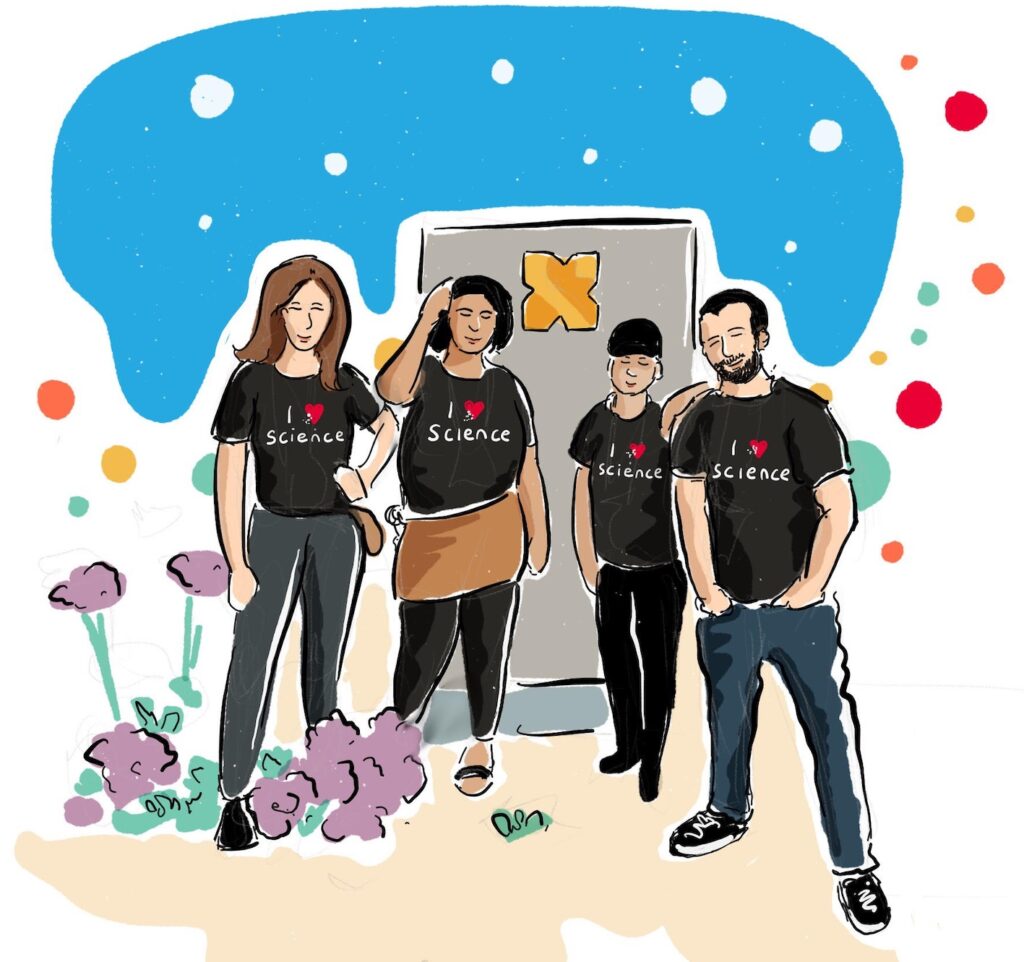The Digital Science team is getting ready to attend the annual Science Foo Camp in San Francisco, California this weekend – and we’re excited, because for the first time since 2019 the event will be held face-to-face as well as online.
Sci Foo, as it’s known, is an “unconference” with no fixed agenda, and brings together researchers, innovators, technologists, communicators and policy makers from around the world who are doing groundbreaking work in diverse areas of science and technology. Attendance is by invitation only.

Since the first event in 2006, Sci Foo has aimed to do things differently. Tim O’Reilly, of O’Reilly Media, had created a format to bring together thinkers from different fields in the Friends of O’Reilly (FOO) Camp format, but it was Linda Stone who suggested that Timo Hannay (of Nature), Chris DiBona (of Google) and Tim should come together in creating a camp that brought computer scientists together with researchers and technologists.
From Digital Science, I as Head of Strategic Events and our CEO Daniel Hook are co-organisers of the event, along with Cat Allman at Google, Tim O’Reilly and Marsee Henon from O’Reilly, and Magdalena Skipper from Nature. We are ably assisted by many stalwart colleagues from across all four collaborators, who freely give their own time to support the event each year.
The topics of discussion are truly wide-ranging, and include: climate, medicine and disease, machine learning, AI, food systems, astrophysics, sustainability, neuroscience, digital society, and the various health, social, political, technological and economic impacts of the pandemic. No matter what area is being discussed, this diverse group brings a unique level of insight and expertise to the discussion, often sparking new thinking and ideas that can help to drive each individual to continue their work with renewed passion.
At Sci Foo 2022, we’re looking forward to many conversations, “lightning talks” and catching up with our fellow organisers and attendees, old and new. For those attendees unable to attend in person, there will be opportunities to join some sessions virtually. It’s our first ‘hybrid’ event, and if successful we hope to continue with this approach.
To understand more about Sci Foo, see this video from 2018 in which we asked a number of scientists what the future might hold. You can also read about past events, such as Sci Foo 2018, 2019, or the virtual Sci Foo 2021.
If you’re lucky enough to be attending this year’s event, please don’t hesitate to say hi to our Sci Foo crew, including Daniel, Amarjit, Suze Kundu from Dimensions L&C, Steve Scott, Leslie McIntosh from Ripeta, and John Hammersley and Jessica Lawshe from Overleaf.
Look out for online chat about the event via the official hashtag #scifoo and discussion on Twitter and LinkedIn from the Digital Science team.
About the Author
Amarjit Myers is Head of Strategic Events at Digital Science.
The post Sci Foo returns face-to-face in 2022 appeared first on Digital Science.
from Digital Science https://ift.tt/OigpC48
No comments:
Post a Comment